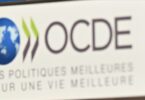SINGAPORE (Reuters): Oil prices inched higher on Monday, bolstered by the anticipation of sustained supply constraints from major producers and growing optimism that the Federal Reserve will choose to leave interest rates unchanged to safeguard the robustness of the U.S. economy.
Brent crude futures for November delivery recorded a slight 3-cent increase, settling at $88.58 per barrel at 0333 GMT. Simultaneously, U.S. West Texas Intermediate (WTI) crude futures for October delivery experienced a 9-cent uptick, reaching $85.64 per barrel.
These modest gains in the Asian trading session followed a week in which both contracts closed at their highest levels in over six months, effectively rebounding after two weeks of weakening.
Sugandha Sachdeva, Executive Vice President and Chief Strategist at Acme Investment Advisors, emphasized, “Crude oil prices have been primarily driven by the anticipation of additional supply cuts from major oil-producing nations, Russia and Saudi Arabia.”
However, Sachdeva cautioned that the continuous increase in U.S. oil production might impede significant price gains in the future.
In line with this, Russian Deputy Prime Minister Alexander Novak recently confirmed Russia’s agreement with OPEC partners on the parameters for ongoing export cuts. An official announcement outlining the planned cuts is expected later this week. Russia has already committed to reducing exports by 300,000 barrels per day (bpd) in September, following a 500,000 bpd cut in August. Additionally, Saudi Arabia is anticipated to extend its voluntary 1 million bpd cut into October.
At the APPEC conference in Singapore, Russell Hardy, Chief Executive of Vitol, highlighted that the global crude market may experience some relief in the next six to eight weeks due to refinery maintenance. However, Hardy emphasized that supplies of sour crude, characterized by higher sulfur content, will remain constrained. He explained, “Because of the OPEC+ cuts, there’s not sufficient supply (of sour crude) for all these complex refineries in India, Kuwait, Jizan, Oman, and China.”
In the United States, although job growth gained momentum in August, the unemployment rate rose to 3.8%, and wage increases moderated. This suggests that labor market conditions are cooling, reinforcing expectations that the Federal Reserve will refrain from raising interest rates this month.
On the other side of the globe, China offered some optimism as manufacturing activity unexpectedly expanded in August, as indicated by Caixin’s manufacturing PMI survey data. This unexpected growth has tempered concerns about the economic health of the world’s largest oil importer.
Beijing’s recent economic support measures, including deposit rate cuts at major state-owned banks and eased borrowing rules for home buyers, have also lent support to oil prices.
Nonetheless, market watchers continue to await more substantive measures to bolster China’s struggling property sector, a persistent drag on the nation’s economy since the pandemic’s emergence.







